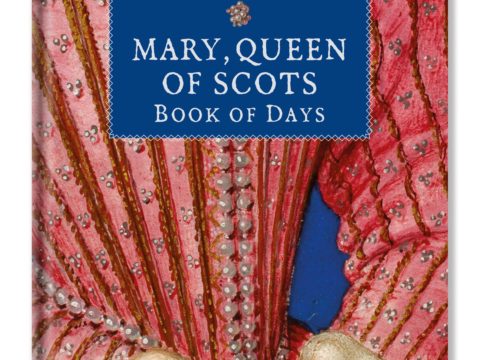King James VI & I and the Bible
Chapter 2 : A New Translation
James seized on the idea with glee. There were several English bibles in use in England (more on earlier translations here), and the most popular one, the Geneva, was heartily disapproved by the King, because of its copious marginal notes, giving a Presbyterian gloss, and, most displeasingly of all, praising Biblical acts of disobedience to royal authority, where to obey would be sinful
The new translation (which was not to have any marginal notes at all) was to be undertaken by the most learned doctors of the two universities, reviewed by the bishops, approved by the Privy Council, and to finally be subject to royal assent. Once it was approved by the King, no other translation could be used in public worship. Clearly, the new translation was going to be Episcopalian, and a firm upholder of royal authority. That is not to say that James wanted anything but an accurate, robust and credible translation, based on the very best scholarship.
Archbishop Whitgift died not long after the conference, to be replaced by Richard Bancroft. Bancroft had initially objected to the idea of a new translation, but once the King had decided on it, he wholeheartedly set to work to turn James’ dream into reality. A flurry of instructions and orders poured from his pen, embodying James’ vision in practical arrangements.

Unlike Tyndale’s Bible, which had been the work of a single, inspired, individual, the new translation was to be created by a committee, as had been the Great Bible of 1539 and the Bishops’ Bible of 1568. The latter had been translated, rather poorly, according to scholars of the time, by fourteen men, each responsible for three or four books. Similarly, the Douai Bible of 1582, created by the English Catholic exiles, was also a team effort. Such collaborative efforts were entirely consistent with other literary endeavour – many of Shakespeare and his contemporaries’ plays were collaborations. Unlike committee authorship today, which so often produces turgid and impenetrable prose, educated Jacobeans had mastered the art of creating a whole from individual parts.
Originally, there were to be fifty-four Translators, divided into ‘companies’ of eight men, each headed by a director. They were to translate from the original Hebrew, Greek and Aramaic texts on the basis of fifteen specific rules, which may be summarised as follows:
- The translation was to build, so far as was consistent with faithful translation, on the Bishops’ Bible. In the event, this original was so far from perfect that it is estimated that it contributed less than 10% to the final product;
- Names of biblical characters were to be rendered in the style most familiar to readers or listeners, for example ‘Timothy’ was not translated as ‘Fear-God’, which was the style the Puritans preferred, and which gave rise to derision as the more devout named their children ‘Sorry-for-sin’, ‘Fear-not’, ‘Eschew-evil’ and the like (Ed - the seventeenth century equivalent of celebrity names?);
- Perhaps most contentiously for the Puritans, the Translators were to keep traditional renditions of certain words – church, not congregation; priest, not elder and so forth;
- Where a word had several possible meanings, the meaning ascribed to it in previous translations was to be preferred, so long as it was correct;
- Chapter divisions were to be retained, so far as possible;
- Marginal notes were to be added only where a Greek or Hebrew word could not easily be translated into a simple English expression;
- Where one verse quoted another verse, they were to be cross-referenced in the margin;
- Within each company, individual Translators were to work separately on the same sections, then compare their work and agree a final version;
- As each section was completed by a company, it was to be reviewed by the other companies;
- If the reviewing company were unhappy with the original translation, they were to inform the translating company, and, at the end all of the directors would review the contentious part and resolve the matter;
- Where there was uncertainty, scholars not on the translation team could be consulted;
- Each bishop was to ask for the opinion of his clergy;
- The directors were named, and included Dr Reynolds and Dr Chaderton, who had represented the Puritans at the Hampton Court Conference;
- The translations, other than the Bishops’ Bible that could be consulted were: Tyndale’s, Matthew’s; Coverdale’s, Whitchurch’s and the Geneva version;
- Where the New Testament quotes the Old (frequently in the mouths of Jesus and the Apostles), a group of external scholars was to check that the quotes were consistent with the original verses.
The Reformation had left the English Church poor, and it was immediately apparent that the Translators would need to have enough to live on whilst they were doing their work. The Bishops were asked to grant benefices sufficient to allow each Translator to have an annual stipend of £20 (about the level of income of a well-off yeoman or minor gentleman). Details do not survive of whether this was done.
There is no definitive record of how the Translators organised their work, although there are indications that some of the Companies had regular weekly meetings. A few documents have been found that were working papers, but no largescale drafts.
In spring 1611, the final product, reviewed by Bancroft, the Privy Council and the King, and with a preface, chapter heads and titles added by the Bishop of Gloucester, was sent to the printer, Richard Barker.
After all the work, the result was something of a damp squib. Barker, the King’s Printer, made a mull of the printing. Pages were muddled, there were frequent mis-prints, the already-old-fashioned gothic typeface was confused with random words in italics, originally meant to indicate a word in Greek or Hebrew and the cross-referencing referred to the old Latin Vulgate bible. This disappointing state of affairs was compounded over the centuries (there was even a 1631 edition that rendered Exodus 1: 14 as ‘Thou shalt commit adultery’). During the nineteenth century, there were reckoned to be some 24,000 variations between all of the extant copies.
Many people thought the language archaic and the Puritans disliked it. The Geneva Bible continued to be the most popular version, until further printing of it was forbidden in 1616, from which time the new bible became the only ‘authorised’ version, although there is no extant documentation relating to the relevant order. Geneva Bibles continued to be imported from foreign presses.
After the Restoration, the King James Bible began to be appreciated, perhaps in part as the symbol of that Utopia of ‘before the war’. In the new states of America, the Geneva Bible also began to give place to the King James Bible. Over the following centuries, its place in the heart of English-speaking culture grew. Revisions were made in the late nineteenth century, but a wholesale new translation was not begun until after World War II, resulting in the New English Bible, which T S Eliot described as a book ‘astonish(ing) in its combination of the vulgar, the trivial and the pedantic’.
It is hard to imagine that any work will stand the test of time better than the King James Bible – a work of prodigious scholarship, collaborative endeavour and literary brilliance.
Listen to our interview with Renaissance English History Podcast on James VI & I here
James VI & I
Family Tree



